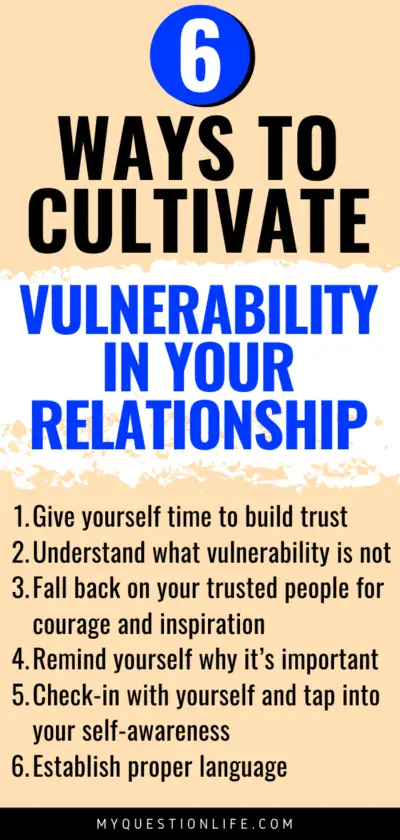[fusion_builder_container admin_label=”Large Screen text” hundred_percent=”no” hundred_percent_height=”no” hundred_percent_height_scroll=”no” hundred_percent_height_center_content=”yes” equal_height_columns=”no” menu_anchor=”” hide_on_mobile=”small-visibility,medium-visibility,large-visibility” status=”published” publish_date=”” class=”@media only screen and ( min-width: 800px ) {padding-top: 0px; padding-right: 5px; padding-bottom: 0px; padding-left: 5px; }” id=”” link_color=”” link_hover_color=”” border_color=”” border_style=”solid” margin_top=”” margin_bottom=”” padding_top=”” padding_right=”0%” padding_bottom=”” padding_left=”5%” gradient_start_color=”” gradient_end_color=”” gradient_start_position=”0″ gradient_end_position=”100″ gradient_type=”linear” radial_direction=”center center” linear_angle=”180″ background_color=”” background_image=”” background_position=”center center” background_repeat=”no-repeat” fade=”no” background_parallax=”none” enable_mobile=”no” parallax_speed=”0.3″ background_blend_mode=”none” video_mp4=”” video_webm=”” video_ogv=”” video_url=”” video_aspect_ratio=”16:9″ video_loop=”yes” video_mute=”yes” video_preview_image=”” filter_hue=”0″ filter_saturation=”100″ filter_brightness=”100″ filter_contrast=”100″ filter_invert=”0″ filter_sepia=”0″ filter_opacity=”100″ filter_blur=”0″ filter_hue_hover=”0″ filter_saturation_hover=”100″ filter_brightness_hover=”100″ filter_contrast_hover=”100″ filter_invert_hover=”0″ filter_sepia_hover=”0″ filter_opacity_hover=”100″ filter_blur_hover=”0″ type=”legacy”][fusion_builder_row][fusion_builder_column type=”1_1″ layout=”1_1″ spacing=”” center_content=”no” link=”” target=”_self” min_height=”” hide_on_mobile=”small-visibility,medium-visibility,large-visibility” class=”” id=”” background_color=”” background_image=”” background_image_id=”” background_position=”left top” background_repeat=”no-repeat” hover_type=”none” border_color=”” border_style=”solid” border_position=”all” border_radius=”” box_shadow=”no” dimension_box_shadow=”” box_shadow_blur=”0″ box_shadow_spread=”0″ box_shadow_color=”” box_shadow_style=”” padding_top=”” padding_right=”” padding_bottom=”” padding_left=”0px” margin_top=”” margin_bottom=”” animation_type=”” animation_direction=”left” animation_speed=”0.3″ animation_offset=”” last=”true” first=”true” border_sizes_top=”0″ border_sizes_bottom=”0″ border_sizes_left=”0″ border_sizes_right=”0″ type=”1_1″][fusion_text columns=”” column_min_width=”” column_spacing=”” rule_style=”default” rule_size=”” rule_color=”” hide_on_mobile=”small-visibility,medium-visibility,large-visibility” class=”” id=”” animation_type=”” animation_direction=”left” animation_speed=”0.3″ animation_offset=””]
[/fusion_text][fusion_text columns=”” column_min_width=”” column_spacing=”” rule_style=”default” rule_size=”” rule_color=”” hide_on_mobile=”small-visibility,medium-visibility,large-visibility” class=”” id=”” animation_type=”” animation_direction=”left” animation_speed=”0.3″ animation_offset=””]
How to Cultivate Vulnerability in a Relationship Even if It Scares You
For many of us, relationships can feel like a back-and-forth emotional struggle. There are moments when we feel like we’re in a battle, regardless of how long two people have been together. These supposed battles, however, are often more rooted in our own struggles and emotions than our partners.
Namely, we’re struggling to be vulnerable in a relationship.
Vulnerability in a relationship is a scary thing. When we’re vulnerable, we show our most authentic selves without knowing if we’ll be accepted. The fear of rejection weighs heavily on us in these situations.
After all, it’d be much easier to hide our true feelings or pass them off with blame than reveal them to our partner. Think about it. If you’re dating, wouldn’t you rather play the waiting game than to reach out and show you actually care? Or, if you’re in a relationship, doesn’t it seem easier to distract yourself with activities or comments instead of admitting your true feelings?
Day after day, many of us choose the option that doesn’t require us to be vulnerable. But we can’t deny the truth forever. Vulnerability in a relationship is 100% necessary for healthy, lasting love.
Click below to jump ahead to a specific section:
- Why Vulnerability Is Important in Your Relationship
- Examples of Vulnerability in a Relationship
- Why Vulnerability is So Hard
- 6 Ways to Cultivate Vulnerability in A Relationship
- How to Properly React When Your Partner is Being Vulnerable

What is vulnerability in a relationship?
Vulnerability is our willingness to take risks and expose ourselves emotionally to others, even when we don’t know the outcome of our actions. We are vulnerable in a relationship when we present our most authentic self through our feelings, desires, wants, and needs.
Being vulnerable requires us to take an emotional risk, which taps into our most primal need for human connection. We don’t know if others will accept us based on what we reveal. Since our need for belonging is so deeply wired into us, the fear of rejection is extreme. We also get caught up in relationship myths that hold us back.
Vulnerability in a relationship looks different for different people, depending on their personality and upbringing.
In the first few years of my relationship, I was terrified to fully trust or depend on my partner for fear of being disappointed. This made it hard for me to show any act of affection to him in the chance that he wouldn’t reciprocate.
Meanwhile, my partner found it extremely easy to display his affections to me. Prioritizing our relationship didn’t feel vulnerable to him. (How he didn’t experience the ball of anxiety and defensive I felt, I’ll never know). He did, however, struggle with being vulnerable about his weaknesses and inadequacy. Just as I felt that I had to prove my independence, he felt he had to prove himself even if it wasn’t his strength.
We both had to overcome these fears to strengthen our relationship for the long-term.
.
Why is vulnerability in a relationship so important?
You can’t have a long-lasting relationship if you aren’t willing to be vulnerable with each other. No matter how much fun two people have together, they’ll never create intimacy if they don’t show their true selves. The benefits of being vulnerable aren’t just helpful, they’re necessary.
- Trust and Intimacy
Being vulnerable with your partner will help build the trust and intimacy in your relationship you need for long-lasting love. If you plan on spending your life with someone, you must trust them and trust that they accept the real you. You can’t know this unless you are willing to show the real you.
- Empathy and understanding
Furthermore, vulnerability in a relationship will bring empathy and understanding to the forefront of your partnership. It’s entirely unrealistic that two individuals will have the same exact struggles and emotions. Therefore, a successful partnership must have partners who can empathize with each other, even if they can’t fully relate.
Vulnerability in a relationship is not about saying, “I know exactly what you’re going through.” Instead, it’s about saying, “I hear what you’re going through, and I love and accept you and your experience.”
- Teamwork
A vulnerable relationship will also create a stronger partnership, be more open for growth, and help each individual overcome negative emotions quicker. Instead of having two individuals fighting for energy and control, you can have two people come together to work together toward a better outcome.
.
Examples of Vulnerability in a Relationship
No matter who you are, we all have something that makes us feel vulnerable in a relationship. And the sooner you can identify what makes you feel vulnerable, the sooner you can overcome the hurdles holding you back in your relationship.
It takes vulnerability to be willing to say, “This is what I want,” even if you’re afraid the other person won’t fully understand. It’s also vulnerable to ask, “This is what I need,” knowing that your partner might not be able to meet your needs (or worse, judge you for them).
Any time you take the first step toward something, whether it’s showing your affection, admitting a weakness, or expressing a fear, you’re taking a risk that your partner won’t reciprocate. For some people, giving a gift or expression of love feels extremely vulnerable. For others, saying “I love you” is second-nature, but admitting a fear or dream can feel risky.
Many of these differences come up when people express themselves through different love languages.
Finally, and perhaps at the center of them all, vulnerability in a relationship is when you are open about your emotions, even if they are irrational or don’t make sense.
Vulnerability in a relationship is hard.
If vulnerability in a relationship is so important, then why is it so hard to be vulnerable? Unfortunately, there isn’t just one cause, but many.
- We lack self-awareness. Before we can present our authentic selves, we need to know what our authentic self looks like. Humans are wired with emotions, biases, and tendencies that make many of us lack self-awareness.
- We buy into damaging societal myths. It’d be one thing if society promoted being vulnerable, and we just had to learn how. Instead, society discourages vulnerability with a bunch of false myths. Our culture labels being vulnerable as a weakness when this couldn’t be further from the truth.
- We can’t stand the vulnerability hangover that comes after we’re vulnerable. Our brains desire control and certainty, two things that are absent when we are truly vulnerable. As a result, we experience a backlash of regret and anxiety after opening up. There are ways to survive vulnerability hangovers, but that doesn’t mean that they won’t be unpleasant.
- We avoid emotional pain, causing us to retreat if we get burned. Being vulnerable will not always give us the positive reaction we want. However, we need to push past these unpleasant experiences and get back on the ol’ vulnerability horse, because it’s worth it in the long run.
It can also be helpful to learn from other vulnerable people in your life. Now that you know what vulnerability looks like, why it’s essential, and why it’s hard, let’s look at ways to be more vulnerable in your relationship.
.
6 Ways to Cultivate Vulnerability in a Relationship
1. Give yourself time to build trust

Being vulnerable and building trust is a cyclical process. With a bit more vulnerability comes a bit more trust, and vice versa. In relationships, you need to give yourself time to build trust with your partner.
Now, I don’t mean that you should be fake at the beginning of your relationship. It’s important to try to be your authentic self in your relationship from the get-go. However, being authentic doesn’t mean spilling your soul.
When I was in college, I went on three dates with a guy I met at work. I found myself having fun on the first date, sharing our interests on the second, and learning his entire life story and most traumatic experiences on the third date. Now, if I were to marry him, I would want to know those pieces of his life. On the third date? Much too soon. Not only had we not built any real trust, but I now doubted his awareness of sharing information.
Timing is a crucial part of being vulnerable. So give yourself time in your relationship. When you feel that it is appropriate for both people, you can share a bit more. The end goal is to create a vulnerable relationship, but it won’t happen all at once.
.
2. Understand what vulnerability is not

As hard as it is to be vulnerable, it’s also hard to not buy into vulnerability myths. Our culture has confused many of us about what vulnerability should look like.
The guy on my third date who revealed his “secrets”? He might have been buying into the false notion that vulnerability is full disclosure. Being vulnerable does not mean spilling all your secrets at inappropriate times. Nor does it mean using it as a bargaining chip, which is what can happen in a relationship.
For example, let’s say Sally reveals a personal story (but it’s not really that private), hoping that Alex tells her a personal account. Or maybe Alex gives Sally a gift to appear vulnerable (even though it’s not that hard for him) to bait Sally into returning the favor. In both instances, these aren’t authentic acts of vulnerability.
Finally, don’t get caught up thinking you need to get deep and dark to be in a vulnerable relationship. Small acts of affection and love can be immensely more vulnerable than sharing a horror story. Remember, it all depends on the person.
.
3. Fall back on your trusted people for courage and inspiration

The reason we hate vulnerability so much is that it leaves us feeling uncertain. We like to be in control of our lives (some of us *looks down guiltily* more than others).
When we’re summoning the courage to be vulnerable – or dealing with the aftermath – it’s helpful to fall back on our meaningful relationships. When I started dating my now-fiancé, I experienced many situations in which I felt anxious about being vulnerable. To combat these negative emotions, I called my cousin or friend to talk through the situation. They helped restore my confidence.
They also reminded me that I had people in my life whom I can depend on. When we take emotional risks, there’s nothing worse than feeling like we’re left with no one in our corner. That’s why turning to your trusted confidants can help give you the courage you need to be vulnerable in your relationship.
Learn how to build meaningful relationships and tips for creating new connections.
.
4. Remind yourself why it’s important

When you’re neck-deep in your emotional backlash of a vulnerability hangover, it can be tough to see the light. You’re probably thinking, Why did I do that? Oh my goodness, why did I think that was a good idea? I can’t believe I just did that. (Sound familiar at all?)
You can quiet this negative self-talk by reminding yourself of why it’s important to be vulnerable. Not only are there numbers benefits to being vulnerable, but in the long run, you’re going to want to be in a vulnerable relationship.
My friend dated her boyfriend for five months. Then, their relationship was put to the test. Some old skeletons in his closet resurfaced, and he wasn’t honest with her about what was happening. By this point, she really liked the guy. And so she was faced with a choice: leave the relationship or stay.
While leaving might have seemed like the harder option, it required a great deal of courage for her to stay in the relationship. She had to make herself vulnerable to forgive him and rebuild trust. Conversely, he had to make himself vulnerable to apologize and prove himself. Both people realized that their care for each other trumped those vulnerable emotions.
Ultimately, it worked out for them. And it doesn’t work for everyone. But when you question being vulnerable, remind yourself of what you want. If you’re seeking a trusting, long-lasting relationship, you have to be willing to work for it.
.
5. Check-in with yourself and tap into your self-awareness

Vulnerability cannot exist by itself. Self-awareness is needed at every step of the way. After all, you can’t present your authentic self unless you know who you are. Then, you can’t manage your vulnerability hangover unless you can recognize your emotions.
I would fly into an emotional backlash after a particularly vulnerable moment early in my relationship. After my fiancé began staying the night more frequently, I made sure to carve out time in which I had plans so he couldn’t stay over. In my defensive state, it was like I was saying, Yes, I was vulnerable, but don’t be fooled. I’m not going to be too vulnerable too soon. And so I made all sorts of excuses. (Even if I was perhaps lying to myself about what I actually wanted).
In retrospect, I should’ve checked in more with my self-awareness. What did I really want? What emotions were getting in the way? Then, instead of letting my fears get the best of me, I could’ve acted in my own best interest (and the best interest of my relationship).
It’s hard to be vulnerable, but that’s why being more self-aware can help you overcome these obstacles. Take a quick, free self-awareness test or read 6 Signs that You’re Lacking Self-Awareness.
.
6. Establish proper language

Vulnerability in a relationship has a lot to do with you as an individual. Still, it also depends a lot on the trust that is established. A crucial way that trust is established is through communication and proper language.
Consider the following scenario. Dana is feeling upset because her partner Morgan has been working overtime all week. Which language sounds better?
- When Morgan gets home from work, Dana immediately says, “You’ve been gone every night this week! You don’t want to spend time with me. I’m hurt and upset.”
- When Morgan and Dana settle down for the night, Dana says, “I’ve been feeling a bit upset this week because you’ve been gone every night this week. I really value our time together, and I appreciate that you’re working a lot. But the story I’m making up in my head is that it’s not a priority for you right now.”
The second example is clearly a more productive option. Here are four things that are modeled that you should include when you’re trying to be vulnerable in your relationship:
- Use “I” language instead of “you” accusations. Dana says, “I’ve been feeling” rather than “You’ve been gone.”
- Explain your desires and goals in the context of a healthy relationship. Dana says, “I really value our time together,” which every partner is going to like to hear.
- Acknowledge your partner’s situation and possible stressors. Dana takes the time to say, “I appreciate that you’re working a lot.”
- Use language like “The story I’m making up” rather than stating assumptions as facts. When Dana says, “The story in my head,” she is acknowledging that this story is her perception. Her perception is valid, but it may not be accurate.
These four strategies all allow Dana to be vulnerable. They also open the door for Morgan to be vulnerable back. (For instance, maybe Morgan now feels comfortable saying, “I’ve been really stressed and nervous that I’m not doing a good enough job at work.”
If you prioritize these six keys, you and your partner can begin cultivating a more vulnerable relationship. It might not be easy or quick, but it will help you create the lasting relationship you want.
.
How to Properly React When Your Partner is Being Vulnerable
It takes courage to be vulnerable. On top of the vulnerability hangover we’re sure to experience, our acts of vulnerability must be encouraged. Just imagine being vulnerable and then immediately being shot down. Would that make you want to be vulnerable again?
Here are 6 quick pieces of advice on how to react when your partner is vulnerable.
1. Express gratitude
Thank your partner for being honest and taking an emotional risk. Remember, it’s never easy to be vulnerable. Your partner is not doing it because it’s fun – they’re doing it because they value your relationship and think the risk is worth it. A small expression of gratitude can go a long way.
2. Ask follow-up questions for clarification
When your partner is vulnerable, they might have trouble clearly expressing themselves. A good strategy is to ask follow-up questions. Not only will this help ensure that you fully understand your partner, but it will also demonstrate to your partner that you’re listening and care about understanding.
3. Make sure you know explicitly what they want or need from you
It’s not enough to merely listen to your partner’s vulnerable confessions. You also need to walk away from the conversation knowing explicitly what they want or need from you. Imagine if you’re finally vulnerable, but your partner doesn’t change at all. The lack of a chance might discourage vulnerability. This can be avoided with clarification.
4. Respectfully express your own needs and feelings
Just because your partner is vulnerable doesn’t mean that you have to quietly listen. After you hear your partner’s thoughts, you should respectfully express your own needs and feelings. Just make sure that you give yourself time to receive their feedback and check-in with your own self-awareness. You want to react from a place of vulnerability, not of anger or defensiveness.
5. Don’t immediately share something of yours
Remember, vulnerability is not meant to be a bargaining chip or means for comparison. Sometimes we get the urge to share a similar problem when our partner opens up. (“I’ve been afraid of losing my job.” “I’ve been afraid of not getting a raise!”) While this urge might be in an attempt to relate and show understanding, it can often come across as an attempt to “one-up” your partner.
6. Make a plan for future check-ins
Unfortunately, having a vulnerability breakthrough does not equate to a permanent fix. We’re human, which means we’ve got a lot of emotions and baggage that will continually get in our way. Therefore, it’s critical to check in with your partner after an expression of vulnerability. Make a plan to check back in with the issue to encourage greater vulnerability and growth.

.
Books to learn more about vulnerability and strengthen your relationship
There are only a handful of authors that I can confidently say changed my life, and Brené Brown is one of them. I’ve read all of her books and they completely transformed my perspective on vulnerability, belonging, and love. With each new book, I found myself applying new ideas and habits into my relationship that made my love life flourish. My fiancé and I fought less, enjoyed more quality time, and learned how to communicate our needs with each other. Check out her books below – you won’t regret it!
[/fusion_text][fusion_code]PHNjcmlwdCB0eXBlPSJ0ZXh0L2phdmFzY3JpcHQiPgphbXpuX2Fzc29jX3BsYWNlbWVudCA9ICJhZHVuaXQwIjsKYW16bl9hc3NvY190cmFja2luZ19pZCA9ICJteXF1ZXN0aW9ubGlmLTIwIjsKYW16bl9hc3NvY19hZF9tb2RlID0gIm1hbnVhbCI7CmFtem5fYXNzb2NfYWRfdHlwZSA9ICJzbWFydCI7CmFtem5fYXNzb2NfbWFya2V0cGxhY2UgPSAiYW1hem9uIjsKYW16bl9hc3NvY19yZWdpb24gPSAiVVMiOwphbXpuX2Fzc29jX2xpbmtpZCA9ICI5M2MwMTNlNTQ5MTY2MTg5MWM5OTJhNWVlZDg0YjNmMiI7CmFtem5fYXNzb2NfYXNpbnMgPSAiMDgxMjk4NTgwWCwwODEyOTg1ODE4LDAzOTk1OTI1MjAsQjAwQlMwM0xMNiwxNTkyNDA4NDE5IjsKYW16bl9hc3NvY19zZWFyY2hfYmFyID0gInRydWUiOwphbXpuX2Fzc29jX3RpdGxlID0gIk15IEFtYXpvbiBQaWNrcyI7Cjwvc2NyaXB0Pgo8c2NyaXB0IHNyYz0iLy96LW5hLmFtYXpvbi1hZHN5c3RlbS5jb20vd2lkZ2V0cy9vbmVqcz9NYXJrZXRQbGFjZT1VUyI+PC9zY3JpcHQ+[/fusion_code][fusion_text columns=”” column_min_width=”” column_spacing=”” rule_style=”default” rule_size=”” rule_color=”” hide_on_mobile=”small-visibility,medium-visibility,large-visibility” class=”” id=”” animation_type=”” animation_direction=”left” animation_speed=”0.3″ animation_offset=””]
Ano.
Conclusion
Vulnerability in a relationship is a scary thing for many of us. We’re afraid of being rejected or disappointed when we reveal our authentic selves and needs. However, to have a long-lasting, positive relationship, we need to be vulnerable even if it’s hard. Vulnerability will build trust and intimacy, empathy and understanding, and teamwork for you and your partner.
There are six ways you can cultivate vulnerability in a relationship.
- Give yourself time to build trust
- Understand what vulnerability is not
- Fall back on your trusted people for courage and inspiration
- Remind yourself why it’s important
- Check-in with yourself and tap into your self-awareness
- Establish proper language
You also want to make sure you foster positive reactions for when you or your partner are being vulnerable.
Struggling with vulnerability in your relationship? Shoot me an email to talk through your emotions and struggles. I might be able to give you the questions you need to figure out how you can cultivate vulnerability in your relationship.
.
[/fusion_text][/fusion_builder_column][/fusion_builder_row][/fusion_builder_container][fusion_global id=”3654″][fusion_builder_container admin_label=”Large Screen follow-up” hundred_percent=”no” hundred_percent_height=”no” hundred_percent_height_scroll=”no” hundred_percent_height_center_content=”yes” equal_height_columns=”no” menu_anchor=”” hide_on_mobile=”small-visibility,medium-visibility,large-visibility” status=”published” publish_date=”” class=”” id=”” border_color=”” border_style=”solid” margin_top=”” margin_bottom=”” padding_top=”” padding_right=”25″ padding_bottom=”” padding_left=”25″ gradient_start_color=”” gradient_end_color=”” gradient_start_position=”0″ gradient_end_position=”100″ gradient_type=”linear” radial_direction=”center center” linear_angle=”180″ background_color=”#000000″ background_image=”” background_position=”center center” background_repeat=”no-repeat” fade=”no” background_parallax=”none” enable_mobile=”no” parallax_speed=”0.3″ background_blend_mode=”none” video_mp4=”” video_webm=”” video_ogv=”” video_url=”” video_aspect_ratio=”16:9″ video_loop=”yes” video_mute=”yes” video_preview_image=”” filter_hue=”0″ filter_saturation=”100″ filter_brightness=”100″ filter_contrast=”100″ filter_invert=”0″ filter_sepia=”0″ filter_opacity=”100″ filter_blur=”0″ filter_hue_hover=”0″ filter_saturation_hover=”100″ filter_brightness_hover=”100″ filter_contrast_hover=”100″ filter_invert_hover=”0″ filter_sepia_hover=”0″ filter_opacity_hover=”100″ filter_blur_hover=”0″ type=”legacy” border_sizes_top=”0px” border_sizes_bottom=”0px” border_sizes_left=”0px” border_sizes_right=”0px”][fusion_builder_row][fusion_builder_column type=”1_1″ layout=”1_1″ spacing=”” center_content=”no” link=”” target=”_self” min_height=”” hide_on_mobile=”small-visibility,medium-visibility,large-visibility” class=”” id=”” background_color=”” background_image=”” background_image_id=”” background_position=”left top” background_repeat=”no-repeat” hover_type=”none” border_color=”” border_style=”solid” border_position=”all” border_radius=”” box_shadow=”no” dimension_box_shadow=”” box_shadow_blur=”0″ box_shadow_spread=”0″ box_shadow_color=”” box_shadow_style=”” padding_top=”” padding_right=”” padding_bottom=”” padding_left=”” margin_top=”” margin_bottom=”” animation_type=”” animation_direction=”left” animation_speed=”0.3″ animation_offset=”” last=”true” first=”true” border_sizes_top=”0″ border_sizes_bottom=”0″ border_sizes_left=”0″ border_sizes_right=”0″ type=”1_1″][fusion_title hide_on_mobile=”small-visibility,medium-visibility,large-visibility” class=”” id=”” content_align=”center” size=”1″ font_size=”” line_height=”” letter_spacing=”3px” margin_top=”5px” margin_bottom=”-40px” margin_top_mobile=”” margin_bottom_mobile=”” text_color=”#ffffff” style_type=”double solid” sep_color=”#0220ff” margin_top_small=”” margin_bottom_small=””]
FOLLOW-UP QUESTIONS
[/fusion_title][fusion_text columns=”” column_min_width=”” column_spacing=”” rule_style=”default” rule_size=”” rule_color=”” hide_on_mobile=”small-visibility,medium-visibility,large-visibility” class=”” id=””]
Comment below with answers, ideas, and more questions, or contact me to collaborate on a future post!
[/fusion_text][fusion_builder_row_inner][fusion_builder_column_inner type=”1_2″ layout=”1_2″ spacing=”” center_content=”no” hover_type=”none” link=”” target=”_self” min_height=”” hide_on_mobile=”small-visibility,medium-visibility,large-visibility” class=”” id=”” background_color=”” background_image=”” background_position=”left top” background_repeat=”no-repeat” border_color=”” border_style=”solid” border_position=”all” border_radius=”” box_shadow=”no” dimension_box_shadow=”” box_shadow_blur=”0″ box_shadow_spread=”0″ box_shadow_color=”” box_shadow_style=”” padding_top=”” padding_right=”” padding_bottom=”” padding_left=”” dimension_margin=”” animation_type=”” animation_direction=”left” animation_speed=”0.3″ animation_offset=”” last=”false” first=”true” border_sizes_top=”0″ border_sizes_bottom=”0″ border_sizes_left=”0″ border_sizes_right=”0″ spacing_right=”” type=”1_2″][fusion_title hide_on_mobile=”small-visibility,medium-visibility,large-visibility” class=”” id=”” content_align=”center” size=”4″ font_size=”30px” line_height=”” letter_spacing=”1px” margin_top=”” margin_bottom=”-10px” margin_top_mobile=”” margin_bottom_mobile=”-10px” text_color=”#ffffff” style_type=”single dashed” sep_color=”#022cff” margin_top_small=”” margin_bottom_small=”-10px”]
EXPLORING YOURSELF
[/fusion_title][fusion_checklist icon=”fa-question-circle fas” iconcolor=”#0216f2″ circle=”no” circlecolor=”#e0e0e0″ size=”18px” divider=”yes” divider_color=”#ffffff” hide_on_mobile=”small-visibility,medium-visibility,large-visibility”][fusion_li_item icon=””]
Where is vulnerability lacking in your relationship?
[/fusion_li_item][fusion_li_item icon=””]
How have you reacted to your partner’s acts of vulnerabity?
[/fusion_li_item][fusion_li_item icon=””]
When is it difficult for you to be vulnerable in your relationship? Why?
[/fusion_li_item][/fusion_checklist][/fusion_builder_column_inner][fusion_builder_column_inner type=”1_2″ layout=”1_2″ spacing=”” center_content=”no” hover_type=”none” link=”” target=”_self” min_height=”” hide_on_mobile=”small-visibility,medium-visibility,large-visibility” class=”” id=”” background_color=”” background_image=”” background_position=”left top” background_repeat=”no-repeat” border_color=”” border_style=”solid” border_position=”all” border_radius=”” box_shadow=”no” dimension_box_shadow=”” box_shadow_blur=”0″ box_shadow_spread=”0″ box_shadow_color=”” box_shadow_style=”” padding_top=”” padding_right=”” padding_bottom=”” padding_left=”” dimension_margin=”” animation_type=”” animation_direction=”left” animation_speed=”0.3″ animation_offset=”” last=”true” first=”false” border_sizes_top=”0″ border_sizes_bottom=”0″ border_sizes_left=”0″ border_sizes_right=”0″ type=”1_2″][fusion_title hide_on_mobile=”small-visibility,medium-visibility,large-visibility” class=”” id=”” content_align=”center” size=”4″ font_size=”30px” line_height=”” letter_spacing=”1px” margin_top=”” margin_bottom=”-10px” margin_top_mobile=”” margin_bottom_mobile=”-10px” text_color=”#ffffff” style_type=”single dashed” sep_color=”#0220ff” margin_top_small=”” margin_bottom_small=”-10px”]
EXPANDING YOUR WORLD
[/fusion_title][fusion_checklist icon=”fa-question-circle fas” iconcolor=”#0216f2″ circle=”no” circlecolor=”#ffffff” size=”18px” divider=”yes” divider_color=”#ffffff” hide_on_mobile=”small-visibility,medium-visibility,large-visibility”][fusion_li_item icon=””]
Why is vulnerability so crucial in a relationship?
[/fusion_li_item][fusion_li_item icon=””]
What qualities does a relationship need to be successful?
[/fusion_li_item][fusion_li_item icon=””]
How do we overcome the cultural obstacles to vulnerability?
[/fusion_li_item][/fusion_checklist][/fusion_builder_column_inner][/fusion_builder_row_inner][/fusion_builder_column][/fusion_builder_row][/fusion_builder_container]



